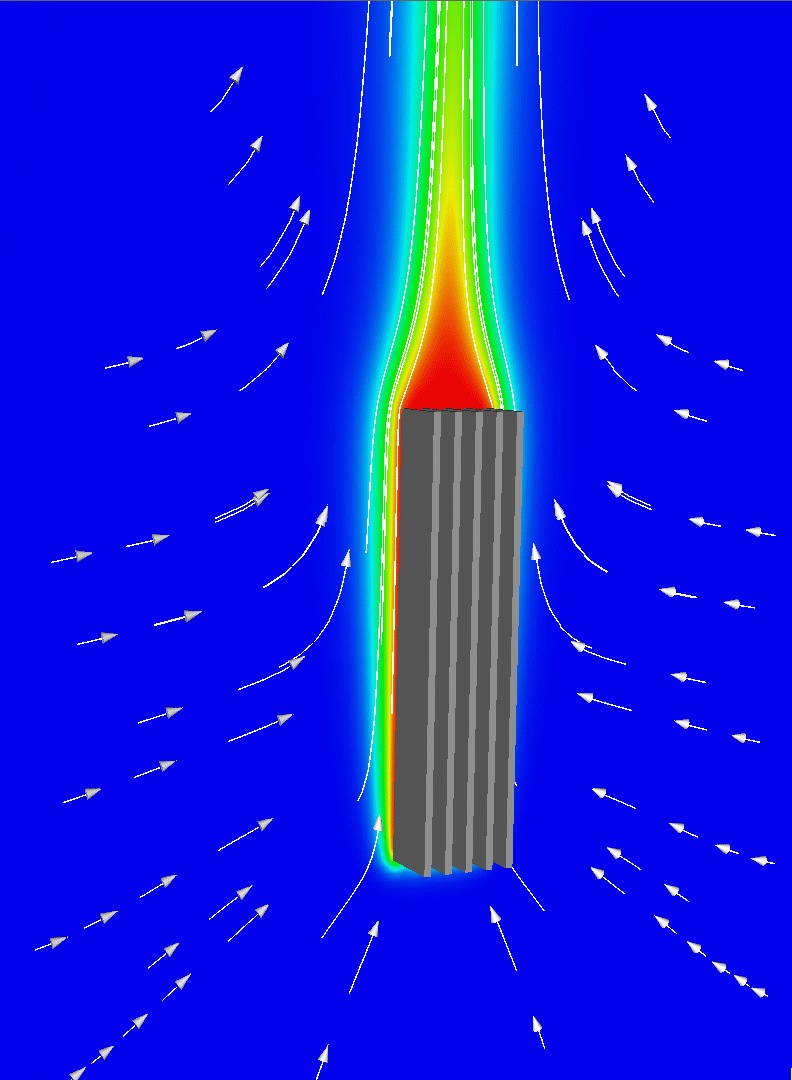Free Convection in a Vertically Mounted Heat Sink — Simulation Example
Overview
Heatsinks are used to dissipate heat from hot electronic components. For an intense heat source, the primary mode of heat dissipation is usually via forced convection, where a fan is used to drive the air to extract heat from the heatsink. However, if the heat flux from the component is not high, no fans are used, and instead, free convection heat transfer is established, resulting in natural air currents because of density variations in the fluid. For such free convection scenarios, the orientation of the heat sink with respect to the direction of gravity can play a major role in determining the effectiveness of heat transfer.


Objectives
In this simulation example, you will learn how to set up and analyze free convection heat transfer in a vertically mounted heat sink using Ansys Fluent.
Setup
Download the Mesh file required for setting up the simulation and associated Case & Data files here. Follow the instructions below to set up this simulation in Ansys Fluent starting with the Mesh file. In case you face any issues setting up or running the simulation, please refer to the corresponding initial and final Case and Data files.
Results and Discussions
Let’s now analyze the simulation and understand the natural convection heat transfer in a vertically mounted heat sink.
